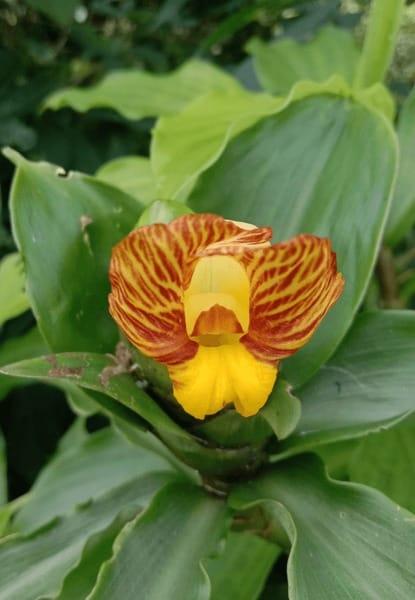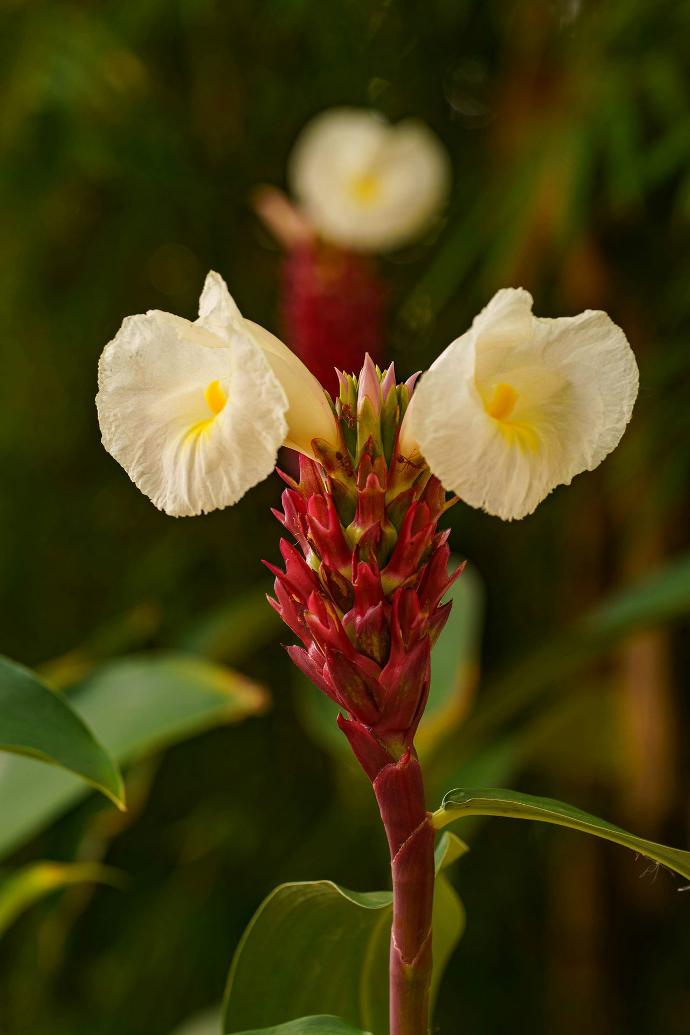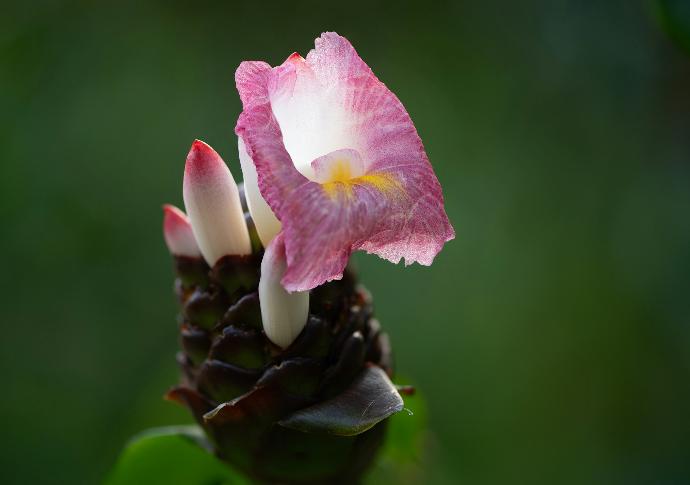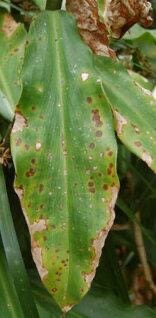Costus Yellow Plant
COSTUS YELLOW, or Yellow Archangel, is a ground cover plant. It thrives in well-draining soil and partial to full shade. Water consistently, and prune to control its spread. Fertilize during the growing season for healthy growth and optimal ground cover.

Habit
shrub
Height
1-2 m
Growth
Moderate
Soil
Well-drained, loamy soil
Shade
Full Sun
Moisture
Moist
Edible
No
Medicinal
No
Origin
West Africa
Climatic Condition
Tropical
Temperature (°)
20-30°C
Humidity (%)
70-90%
Potting media
Peat-based mix
Fertilizers
Balanced fertilizer
Watering
Keep soil consistently moist; high humidity preferred
Plant Weight
2-4 kg
Flowering Time
Year-round
Soil Ph level
5.5 - 6.5
Water Ph level
5.5 - 6.5
Soil EC
1.2
Yield Per Plant
Primarily ornamental; not typically harvested for yield
NPK ratio
10:10:10
life Span
Perennial
Health Benefits
Ornamental plant; used in traditional medicine.
Suggested Grow Media or Potting Mix ?
50% loamy soil, 30% compost, 20% sand
Suggested Fertigation/Fertilizers
Fertilize every 2 weeks with a balanced fertilizer during growing season.
Common Diseases and Remedies
rhizome rot , leaf blight
rhizome becomes light brown and gives offensive odour, curling of leaves towards upwards.leaf lamina has small irregular spots light brown in colour.
hot water treatment , turmeric soda mixture.
no chemical treatment has been worked out , dithane M-45
HEALTH BENEFITS
- Anti-diabetic: Traditionally used to manage blood sugar levels.
- Digestive Aid: Helps with indigestion and constipation.
- Anti-inflammatory & Antioxidant: Used for skin issues and wound healing.
What Is An Costus yellow Tree?
Costus spectabilis, also known as yellow trumpet, is a short African perennial. It is a perennial herbaceous plant that produces four large fleshy leaves that lie flat on the ground. Orange flowers bloom from late spring to early winter.

What Are The Different Types Of Costus Plants?
1. Costus tonkinensis
A rare, tall-stemmed perennial with bright yellow flowers that grow directly from the rhizome.
2. Costus 'Belize Yellow
A cold-tolerant plant that grows well in most parts of Australia and prefers semi-shade. It blooms from spring to late autumn.
3. Costus spectabilis
A species that becomes dormant in winter and shrinks into a millipede-like rhizome without roots. It occurs from Sierra Leone through Sudan to Angola and Zimbabwe.
4. Costus comosus
A plant that looks best in well-drained, nutrient-rich soil in a sheltered location, but also tolerates sun.

How to care for Costus Plants ?
1. Location
The plant requires a warm climate. In colder climates, you can also enjoy them in containers that you can bring indoors during the winter.
2. Sunlight
Costas plants prefer bright, direct light. It tolerates partial shade, but requires at least 4 hours of direct sunlight per day. Plants that receive more light should receive more water.
3. Hydration
Costas plants require a lot of water and should be watered regularly. The soil should not dry out even in winter. Plants that receive more sunlight require more water.
4. Soil
Costas plants grow best in nutrient-rich, well-drained soil. You can use a ready-made fertile breathable primer with the addition of a small amount of sand.
5. Nutrition
Costas plants can be fertilized weekly with a weak liquid fertilizer containing micronutrients. You can also apply fertilizer levels of N90, P40, and K20.
6.Issues
Brown leaf edges: If your plant has brown leaf edges, it may be underwater or exposed to cold winds. Try increasing water and humidity.
Pests and Diseases: Costas plants are susceptible to mealybugs and aphids.
Lowers blood sugar levels: Eating the leaves, taking supplements, or boiling the leaves to make tea can lower blood sugar levels.
Other health benefits: Insulin plant may have other health benefits such as antioxidant properties, diuretic properties, antibacterial properties, and cancer prevention properties.
Insulin Plants contain many nutrients, including proteins, terpenoids, flavonoids, antioxidants, ascorbic acid, iron, phosphorus, calcium, and B vitamins.
FAQs About Growing Costus
1. How do I care for Costus?
Fertilize in spring and keep it moist. All types of costas grow well in partial shade and morning light.
2. What is the common name of Costas flower?
Plants of the genus Costus are often called spiral ginger, despite their family (Costaceae).
3. Is Costas an ornamental plant?
The Costas plant is a plant closely related to ginger that produces spectacular inflorescences, one per plant. These plants require a warm climate.
4. Is Kostus a medicinal plant?
Kostus is widely recognized in traditional medical systems such as Ayurvedic medicine, Chinese medicine, and Tibetan medicine.
5. Where is Indian Costus?
Costus is an important herbal plant in the Indian medical system and is widely distributed in Kashmir, Uttarakhand and the Western Ghats.

